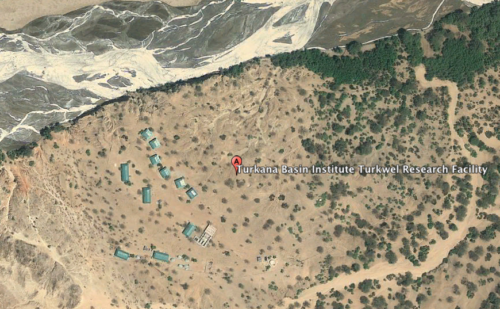
For the last module of the TBI Origins Field School, Archaeology of the Turkana Basin, we headed to the west side of the lake. On this side, the students will be living at the TBI Turkwel Research Facility which is set up very similar to Ileret. However, we are now not too far from world famous archaeological sites of Kokiselei, Lokalalei, and Lomekwi, which the students will get the opportunity to visit! This module will be led by Dr. Sonia Harmand, Archaeology professor from Stony Brook University and co-director of the West Turkana Archaeological Project. Dr. Harmand has been working in the Turkana Basin for many years and has contributed greatly to our understanding of the earliest stone tools from East Africa. In 2015, Dr. Harmand and her team published in Nature their most recent discovery of the earliest known stone tool technology at Lomekwi 3, dating to 3.3 Ma. This discovery has been ground-breaking, making the oldest stone tools 600,000 years older than we originally thought and broadening our understanding of past hominin behaviors.
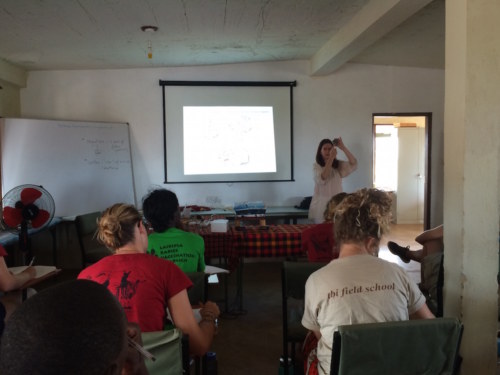
Dr. Harmand shows the students the different features of a flake
Throughout this module, the students will learn how early hominins used and made stone tools and what it can tell us about past behaviors and their interactions with the environment. Dr. Harmand began the module by introducing a key concept in archaeology: the difference between tool using and tool making. Tool use can be seen by a number of primates and other animals, however, these animals never actually make a tool, something we only see in our hominin lineage. On the other hand, tool use has been seen by chimpanzees, crows, orangutans, dolphins and most importantly, capuchin monkeys. In the wild, capuchin monkeys will use a hammerstone and anvil in order to crack open their food. This is a very common method used by capuchins which is not taught but transmitted by observation. After the students watched videos of capuchin monkeys using hammerstones and anvils, it was very clear that throughout the entire process there was never the creation of a stone tool and these monkeys were simply using resources to obtain food in a more efficient manner.
To fully understand the root of tool using and tool making, we set out to the field to give these methods a try and test out their efficiency! Dr. Harmand had the students do an activity where they had to collect palm nuts and then find appropriate tools to peal off their outer skin. The purpose of this activity was to demonstrate how certain tools can be used to attain food resources. In fact, the locals in Turkana often use tools to open these same nuts! Check out how skilled the students are below!
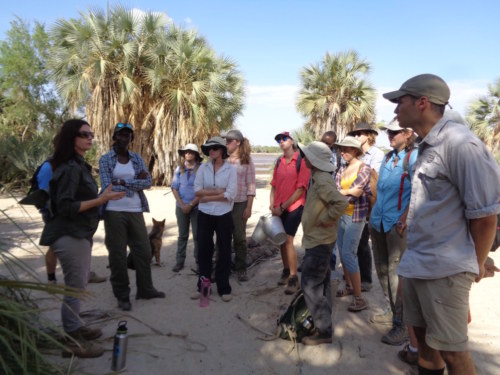
Dr. Harmand explains to the students how this area is a prime spot for collecting nuts
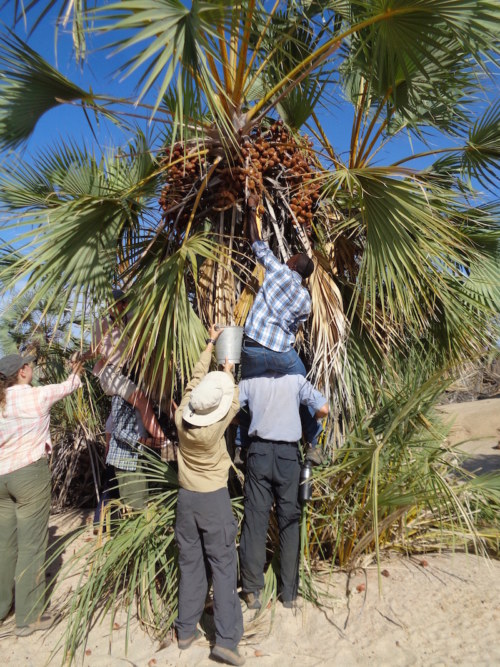
Toby, Jon and Carla work together, trying to get as many nuts as possible
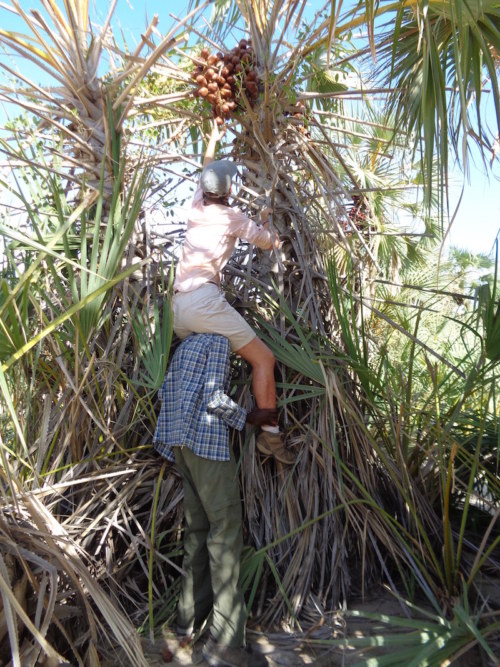
Esther and Millie give it a try as well!
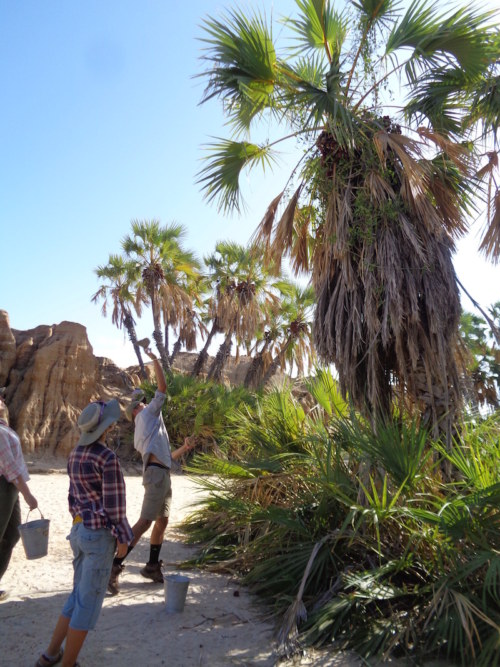
Max tries a different method by throwing rocks at the nuts
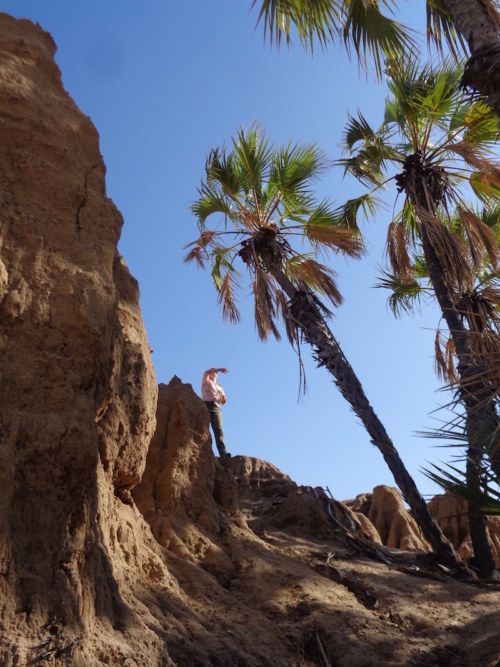
Kathryn tries to get a better vantage point by moving to higher grounds
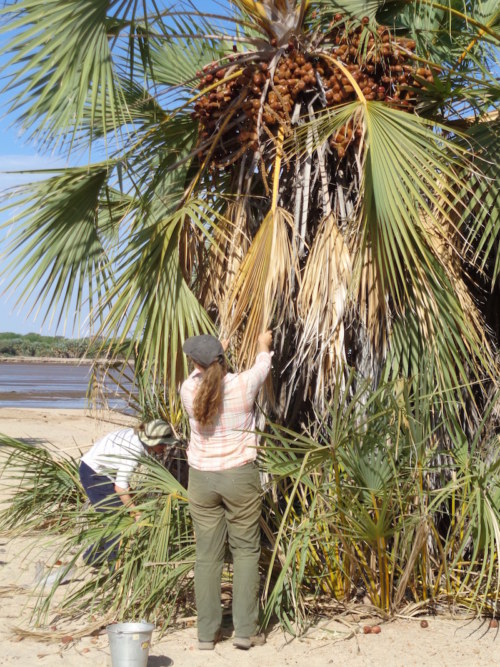
Yvette tries shaking the branches!
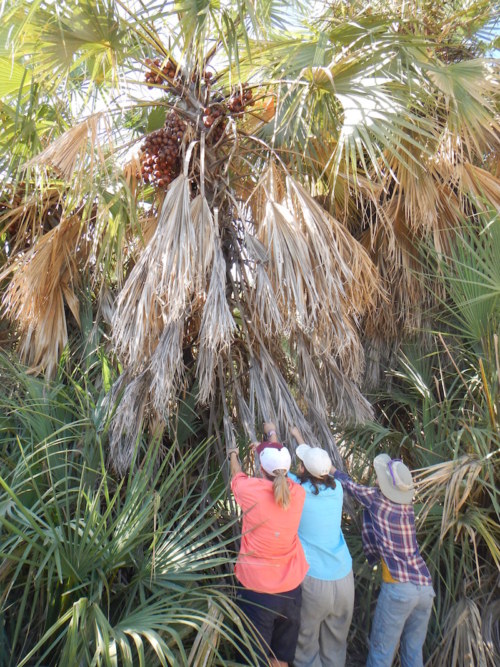
Danielle, Morgan and Emily work together as they use Yvette’s method of collecting nuts
After the students acquired enough nuts, they searched for appropriate tools to use and found a nice shady area where they could test their efficiency! Tom, our camp dog, even joined in on the activity and watched as the students worked diligently.
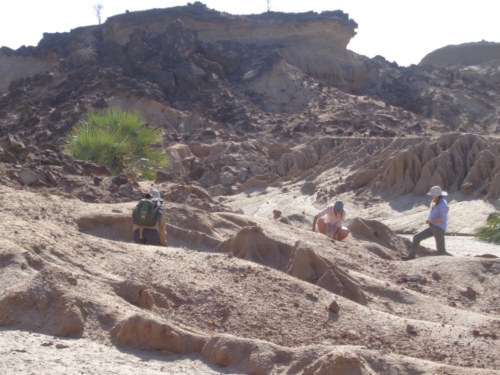
Students set out searching for the right rocks to use!
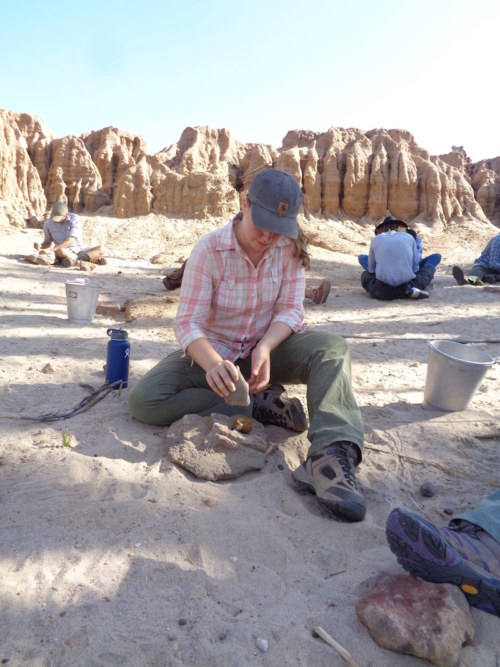
Yvette tries to remove the outer layer of her palm nut by using a hammerstone and anvil
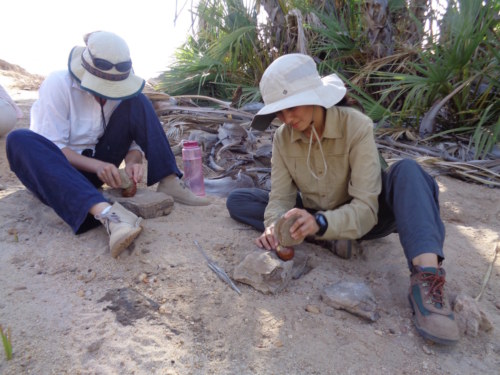
Natalie and Carla quickly pick up the proper methods used during nut processing
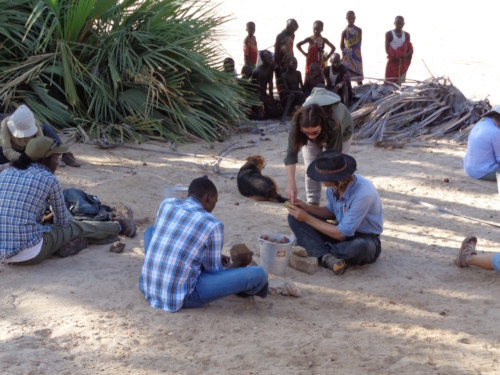
Dr. Harmand explains to Jon a more efficient way to remove the outer skin
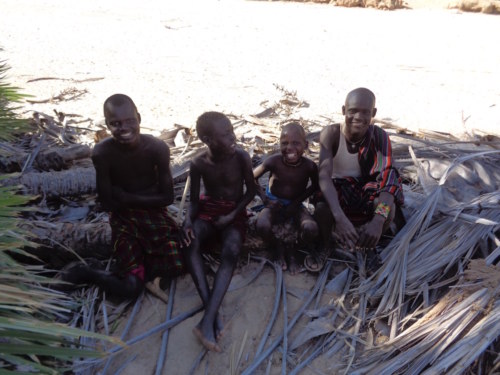
Local Turkana watch the students hard at work
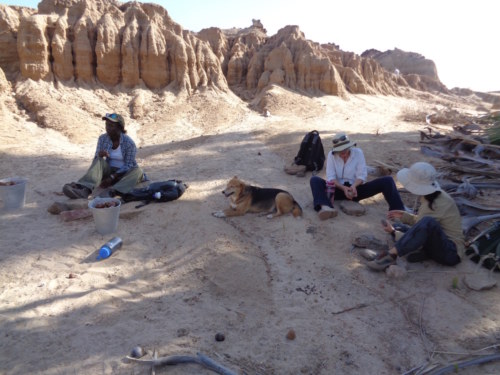
Tom (the dog) watches the students, hoping someone will share a palm nut with her
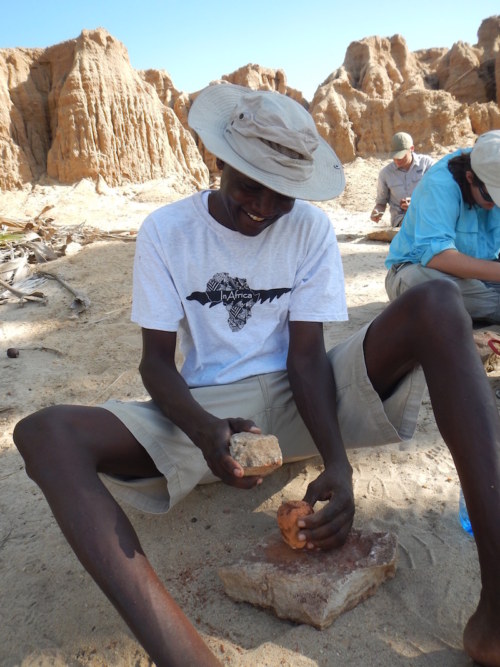
Francis, who works for TBI, shows the students how he processes the palm nuts
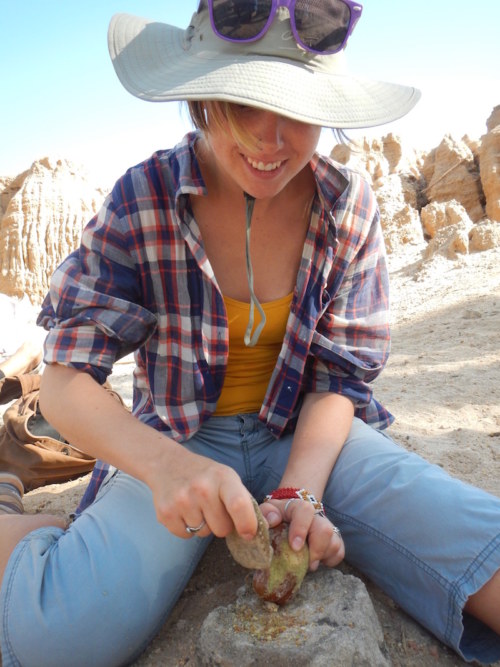
Emily starts to get the hang of it!
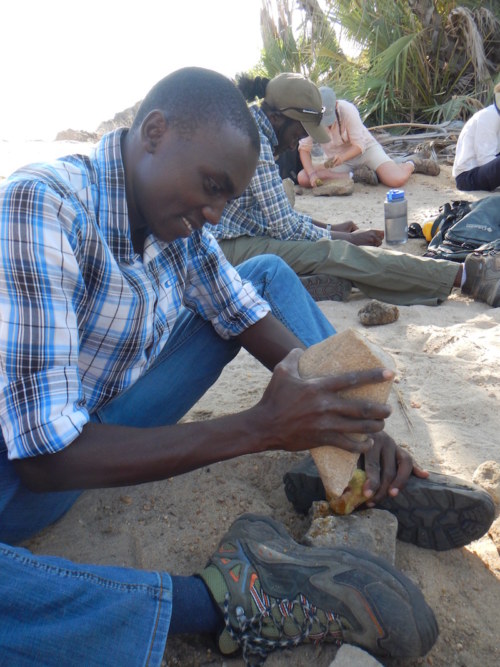
Toby uses a really large hammerstone!
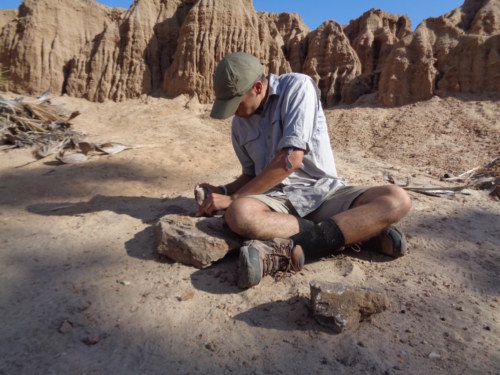
Max is almost ready to eat!
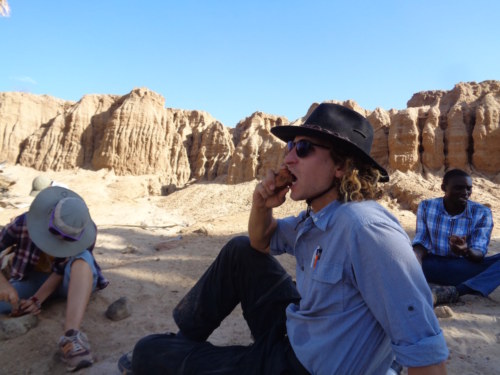
Jon takes a bite
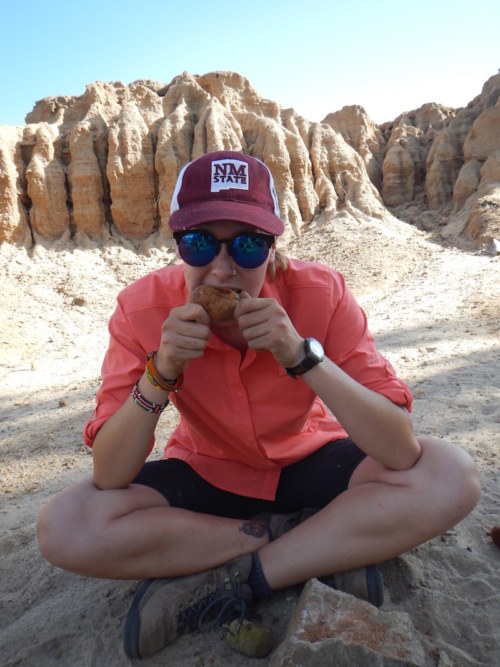
Danielle loves it!
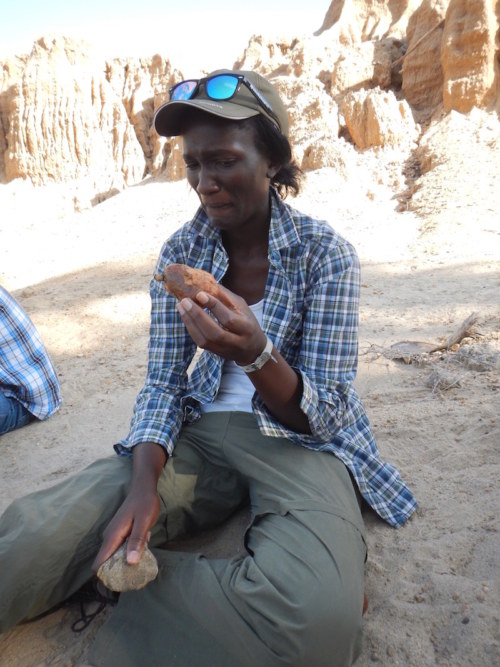
While Esther was not so pleased…
The students all left this activity with a better understanding of how tools can be beneficial with food processing and why this was considered tool use and not tool making. Check in soon to see how the students do once they go a step further and start to make their own stone tools!





